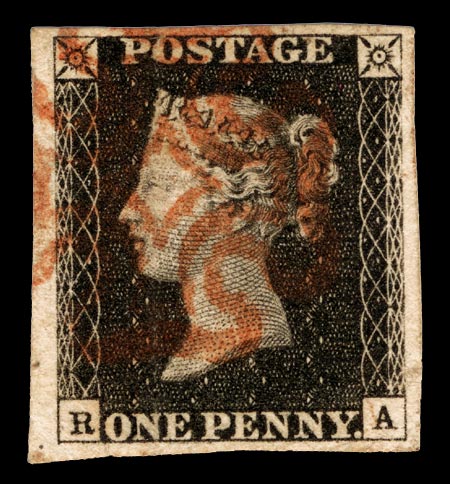
First Stamp
Ask an American to name a person responsible for creating the modern postal service, and “Ben Franklin” is the answer you’re likely to get. But while Franklin, our first postmaster, deserves credit for establishing an effective postal system early in our history, the creation of the USPS is not an example of Franklin’s famous capacity for innovation. The innovations that would shape the postal service into what it is today began a little less than a century after Franklin’s time, brought to the world by an English schoolmaster.
Sir Rowland Hill was knighted for an idea he had back in 1837, when he figured out that postage could be sold in advance on strips of adhesive paper. Hill’s invention goes much deeper than the postage stamp, though. To even arrive at the idea of a stamp, Hill had to completely restructure the way postal systems operated at the time.
Before prepaid postage stamps, postage rates were charged based on size and distance. Letters were mailed loose, and rates would rise with each page added, or for each mile farther from its sender it had to go. Possibly the worst part of this whole deal was that the addressee had to pay the postage upon receipt. As a result, mailing a letter wasn’t very cheap back then, or very secure or reliable.
But the industrial revolution was going strong, and transportation was improving rapidly with the spread of rail systems and steamships. This improvement in transportation efficiency combined with rising literacy rates created a situation in which an efficient, affordable postal system could thrive.
Hill devised a new system of postal rates based on weight, in which a half-ounce letter could be mailed anywhere within Great Britain for a penny. That postage would be paid by the sender in the form of postage stamps. Hill also suggested a paper cover for correspondence, to which the stamp could be affixed. This, of course, evolved into the modern envelope, offering greater security in addition to a place to put the stamp. Another of his ideas was to install letterboxes on all houses for the delivery of mail.
The world’s first postage stamp, the Penny Black, was issued on May 1, 1840, in Great Britain, and with it Hill’s postal rates and other ideas were implemented. By 1847 the United States followed suit and issued its own stamps, and in 1860 some 85 countries had issued stamps as well.